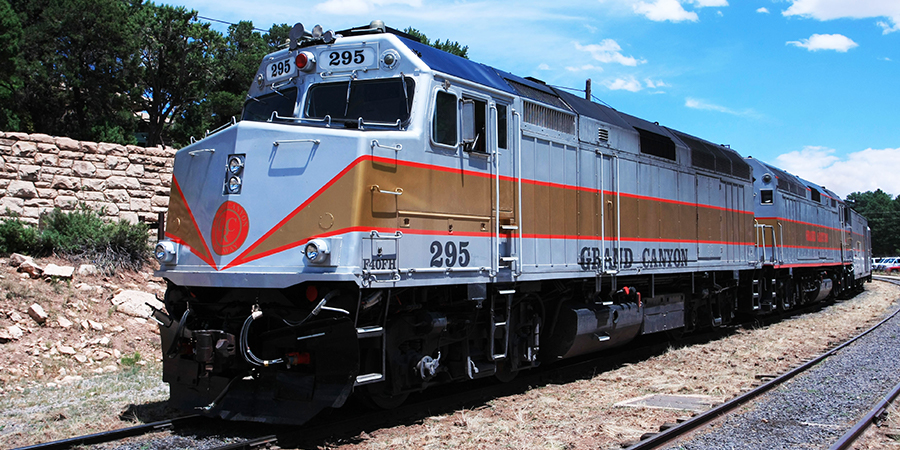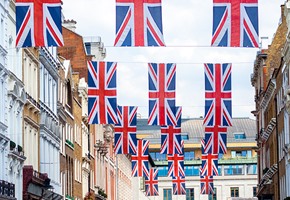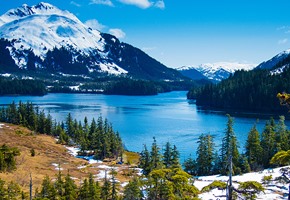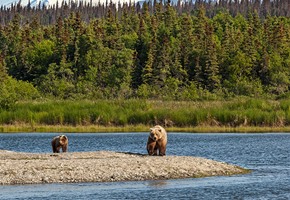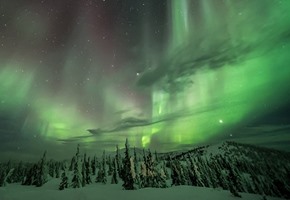Three dollars and ninety-five cents: In 1901 that is all you needed to see what Theodore Roosevelt called "one great sight every American should see." The Grand Canyon's train has a colorful history that begins at the turn of the 20th century - a time when the west was wild, and Americans traveled for leisure, but more often opportunity.
The Early Years of the Grand Canyon Railway
Originally running from Williams, Arizona to the Anita Mines 45 miles north, the railway brought just that, opportunity. Miners from the region dug out ore of all types, including gold, which led the sheriff of the region, Buckey O'Neill, to head east with a proposition for the Santa Fe Pacific Railroad. Sheriff O'Neill presented the partnership from all angles; he introduced both the lure of mining in the region and the stunning beauty of the canyons. He also presented the problem with their current transportation system. Travelers began their journey in Williams with a five 1/2-hour train ride, and then they boarded a coach for the remaining 20-mile ride to the Grand Canyon. Finally, his persistence paid off, and in 1897, the Santa Fe and Grand Canyon Railroad Company was formed to further the tourism opportunities of the west.
While construction on the remaining 20 miles of track began immediately, there were some ownership issues that lead the railway to change hands. In 1901, the Atchison, Topeka & Santa Fe Railway completed construction on the Grand Canyon train route, and the first train set out on tracks on September 17, 1901. It was a glorious moment for travelers and the railway alike. At last, tourists had a way to see the beauty of the forest preserve without enduring a $15, 8-hour stagecoach ride from Flagstaff, or without switching modes of transportation after arriving at the mines. The steam-powered locomotives chuffed along 65 miles of track in a direct route from Williams to the South Rim, providing passengers with comfortable seating, protection from the elements and, most importantly, fabulous views of the Grand Canyon.
There was only one issue: Upon arrival at the South Rim, there was little there besides the views. Visitors had no station to greet them when the train pulled into the Grand Canyon. Those who stayed overnight slept in temporary tents along the rim, all of which were constructed out of wood and canvas. To solve this issue, the company who made the Grand Canyon train possible consulted an architect, and work began to make the region a true tourist destination.
Construction on the South Rim
The first project commissioned by the railway was an iconic inn that still hosts guests to this day, the El Tovar Hotel. Construction was completed in 1905, and the resulting hotel was the first of its kind in the west, in both class and style. Next, the Atchison, Topeka & Santa Fe Railway went on to build a railway depot, restaurants, shops and more in what is now known as Grand Canyon Village. All of the supplies for these structures were sourced locally from northern Arizona and brought in on the tracks of the Grand Canyon railroad. The railway also carried lumber, cattle, and water between the canyon and Williams. With the land's monument designation in 1908 and National Park designation in 1919, visitors came to the park at an even greater rate. Construction on the South Rim continued, and the railway flourished.
Of course, the 20th century also brought the invention of automobiles, and in 1920, the first road into the Grand Canyon was built. This was great for the park, as it opened the attraction to a whole new type of tourist; on the other hand, the railway began to suffer. Over the next 40 years, use of the Grand Canyon train dwindled until the railroad eventually ceased operation in 1968.
New Life for the Railway
From 1968 to 1988, the steam and diesel engines of the rail line sat unused. All of this changed when a couple of private buyers purchased the railroad with the goal to revitalize the trains and bring the romance of train travel back to Grand Canyon National Park. And they did just that. Tracks were rebuilt. Engines were restored. On September 17, 1989 - exactly 88 years after the train's first run - the Grand Canyon train resumed its route. As time went by, the ease of travel on the railway once again brought passengers aboard. So much so, in fact, that between 50,000 and 60,000 automobiles are kept out of the park annually thanks to the trains.
Today, the railroad is operated by a fleet of more modern diesel engines that take passengers on the 2 hour and 15-minute journey from Williams to the South Rim. Travelers can choose from six comfortable classes as they make their way to one of the Seven Natural Wonders:
- Restored 1923 Pullman train cars
- Coach Class
- First Class
- Observation Dome
- Luxury Observation Dome
- Luxury Parlor Class
The amenities available to travelers vary based on the class that is selected. For example, passengers of the Pullman Cars are treated to authentic Western entertainment onboard, whereas those that ride in the Observation Dome are treated to complimentary juice, fruit, pastries, and coffee in the morning and snacks and a white wine toast in the afternoon. All passengers enjoy spectacular views of the changing scenery, glimpses at the region's wildlife and a look that the various plants that accent the desert landscape.
Are you interested in riding the rails on the storied Grand Canyon train route? Vacations By Rail offers a variety of tour packages featuring the Grand Canyon Railway, including those that are Grand Canyon-specific and those that take travelers from coast to coast. Contact a rail specialist today to find the tour that suits your desire for adventure.

